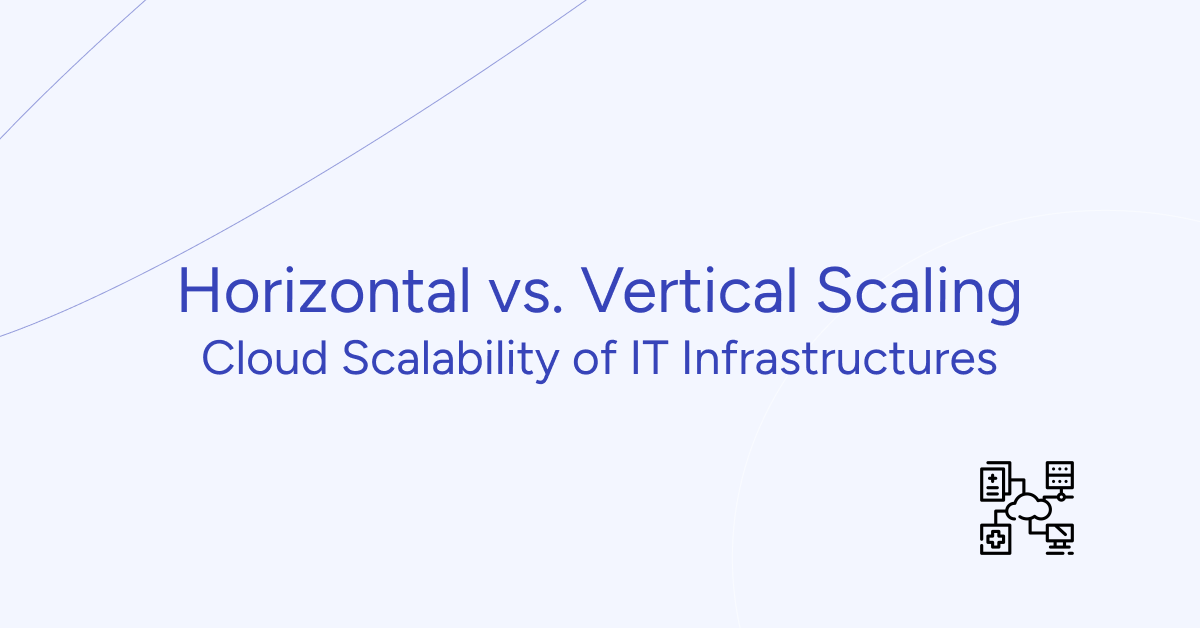As applications continue to grow in size and complexity, the concept of microservices has gained significant traction in the software development industry. Microservices architecture involves breaking down a monolithic application into a collection of smaller, independent services that communicate with each other through well-defined interfaces. While this approach offers several benefits, such as improved scalability, flexibility, and fault isolation, it also introduces additional complexity and overhead. The decision to adopt a microservices architecture should not be taken lightly, as it may not be the best fit for every application. Monolithic vs microservices.
- Do you really need microservices?
- Distributed Transactions Across Services
- The Need for Frequent Inter-Service Communication
- Additional Considerations for Microservices
- When to Embrace Microservices:
- Monolithic vs Microservices
- Considering Microservices? Get Expert Help from Gart
- Conclusion: Monolithic vs Microservices
In this article, we’ll explore the key considerations that should guide your decision on whether to embrace microservices or stick with a more traditional monolithic architecture. We’ll delve into factors such as the size of your application, the need for independent scaling, the presence of distributed transactions, and the frequency of inter-service communication. By the end of this article, you’ll have a better understanding of when microservices might be the right choice and when a monolithic approach might be more appropriate.
Do you really need microservices?
Size Matters
One of the fundamental questions to ask when considering microservices is whether your application is large enough to warrant breaking it down into smaller services. Not all applications are sufficiently complex or sizeable to benefit from a microservices architecture. As the name suggests, microservices are intended to be small, focused services, each performing a specific role. In an ideal world, each service should be a self-contained application.
The image above compares the “cost per line of code” between microservices and a monolithic application. Microservices are more expensive, even in simple cases, because there is a minimum cost for the resources required for personnel and equipment. This is a factor that everyone should consider, and if it does not concern you, perhaps you should not be making such decisions.
While no one disputes that the codebase size may grow in the future, potentially adding a new level of complexity, it’s also worth remembering that well-designed code can always be transitioned to microservices as it approaches a threshold.
The Need for Independent Scaling
Imagine that a product owner approaches you with the idea of a management system to automate the human resources department for a company with 10,000 employees. The technical enthusiast within you might immediately respond: microservices architecture!
Of course, this is an edge case, but you’ve already grasped the general idea! One of the main advantages of using this architecture is the ease of scaling individual components. You can find numerous applications where this principle will work, but does your application need it?
Distributed Transactions Across Services
This is perhaps the most complex and strategic decision, as transactions spanning multiple services are responsible for the entire architecture. Processing transactions across different services implies shared locking between services, and some of these inter-locks are difficult to trace and create race conditions. These floating errors can harm services and sometimes even frustrate engineers.
REST services are stateless by definition and should not participate in transactions that span multiple services. In the world of high performance, two-phase commit (2PC) is an unnecessary evil. The SAGA pattern adds another level of complexity that you may not be prepared for.
Microservices create potential data integrity issues because they inherently advocate decentralized data management. In a monolithic application, you can update many things within a single transaction, while updating the same data in microservices requires multiple passes, as distributed transactions are discouraged (for a good reason). Therefore, developers need to be aware of integrity issues and figure out how to detect desynchronization before writing code they might regret.
Can you have transactions distributed across services? Yes, of course.
Is it worth doing a chain of actions over stateless services? Maybe not!!
The Need for Frequent Inter-Service Communication
In a typical monolithic application, each instance of a microservice is provided as a module within the system. Communication between modules works in-memory with near-zero latency. When introducing microservices, keep in mind that communication between services has transitioned from in-memory transactions to wire transfers.
There are many proven and tested solutions, but the price is the same – latency. When moving to microservices, latency increases from nanoseconds to microseconds. Try to imagine three services passing data over the network. Assuming each service call takes 100ms (not particularly fast under load), you’ll spend 300ms on the network alone.
It’s worth noting that some applications are inherently tightly coupled with components and services. The additional communication overhead could lead to catastrophic consequences in real-time data processing applications. Try to imagine communication latency in a surgical suit or an air traffic control system!
Additional Considerations for Microservices
Increased Complexity:
While microservices were initially designed to reduce complexity by breaking down an application into smaller parts, their architecture can be more complex to deploy and maintain compared to monolithic applications. It’s important to remember that the average IT organization doesn’t have the same level of expertise as engineering teams at companies like Netflix.
Cost of Distributed Systems:
Microservices are distributed systems with a high degree of modularity. However, distributed systems come with a price. A monolithic application can be deployed on a single large VM or container, while microservices need to be deployed independently (ideally) on multiple VMs or containers. This can increase the overall cost of deployment and management.
DevOps:
While DevOps can be a valuable tool for managing microservices, it can also be counterproductive in small companies. However, it’s safe to say that microservices cannot be effectively managed without a DevOps team.
Tight Coupling:
Some applications are inherently tightly coupled. Breaking them down into microservices to fit the architecture can be disastrous.
Lack of Experience:
Lack of experience is a critical factor in any problem, and it’s not limited to SOA. However, with microservices, it can be a major issue. Deploying applications in the wrong order or experiencing a failure and having a dependent service go down can have serious consequences.
End-to-End Testing:
In a monolithic application, running tests can be done almost instantaneously. However, with multiple interdependent services, testing can be significantly delayed without effective orchestration.
Data Contract Chaos:
Developing and maintaining data contracts within a team is very different from sharing them between teams. When working with microservices, your team may not even be in the same region, let alone using the same programming language. Developing data contracts for specific needs will require additional time and effort.
Legacy Codebase:
Let’s be honest, working with a legacy codebase is a daily reality for most of us. It’s the bread and butter of many organizations. Rapid technological advancements keep us ahead of the curve, but they also isolate us from legacy codebases. Can you be sure that a newly developed framework using RabbitMQ will work seamlessly with an outdated application running on AIX?
Troubleshooting:
Each service will have its own set of log files to analyze. More services = more files.
When to Embrace Microservices:
Before you decide to use microservices, you should carefully consider the following factors:
- The size and complexity of your application. Microservices are a good choice for large, complex applications. However, they may not be the best choice for small, simple applications.
- The need for scalability. Microservices are a good choice for applications that need to be scalable. However, they may not be the best choice for applications that do not need to be scalable.
- The need for agility. Microservices are a good choice for applications that need to be agile. However, they may not be the best choice for applications that do not need to be agile.
- The need for resilience. Microservices are a good choice for applications that need to be resilient. However, they may not be the best choice for applications that do not need to be resilient.
Monolithic vs Microservices
| Feature | Monolithic Architecture | Microservices Architecture |
|---|---|---|
| Structure | Single, unified codebase | Collection of independent services |
| Deployment | Deployed as a whole unit | Independent deployment of services |
| Scalability | Scales the entire application | Individual services can be scaled |
| Development Complexity | Simpler initial development | More complex development and deployment |
| Maintainability | Changes can impact the entire application | Easier to isolate and fix issues |
| Technology Stack | Limited flexibility | Can leverage different technologies for different services |
| Team Structure | Works well for smaller teams | Requires coordination across development teams |
| Cost | Lower initial cost | Potentially higher operational cost |
| Suitable for | Small, less complex applications | Large, complex, and evolving applications |
Considering Microservices? Get Expert Help from Gart
Microservices offer a powerful approach to building applications, but navigating their complexities can be a challenge. Monolithic vs Microservices? Gart can help!
Our team of experienced professionals has a proven track record in designing, deploying, and managing microservice architectures. We can help you:
- Evaluate your application’s suitability for microservices
- Design a scalable and maintainable microservices architecture
- Implement DevOps practices to streamline microservices management
- Troubleshoot and overcome common microservices challenges
Don’t go it alone! Contact Gart today and let us help you leverage the power of microservices to achieve your application goals.
Conclusion: Monolithic vs Microservices
Microservices are a powerful architectural style with many advantages, but they also come with their own set of challenges. Before adopting microservices, it’s important to carefully consider the specific needs of your application and organization, as well as the potential drawbacks and complexities involved.
See how we can help to overcome your challenges
Evaluating monolithic vs. microservices? This guide weighs key factors like app size, need for independent scaling, distributed transactions, and inter-service communication demands to help decide the right architecture fit.









